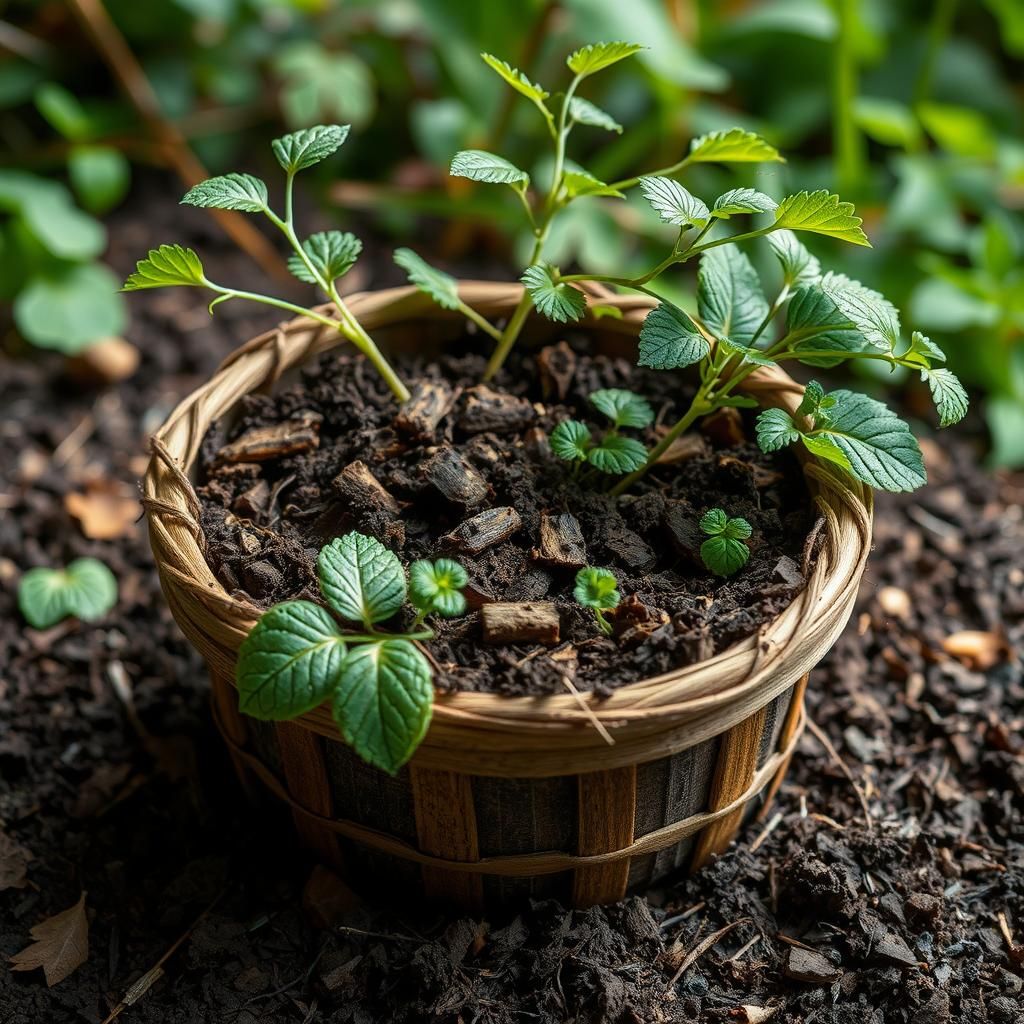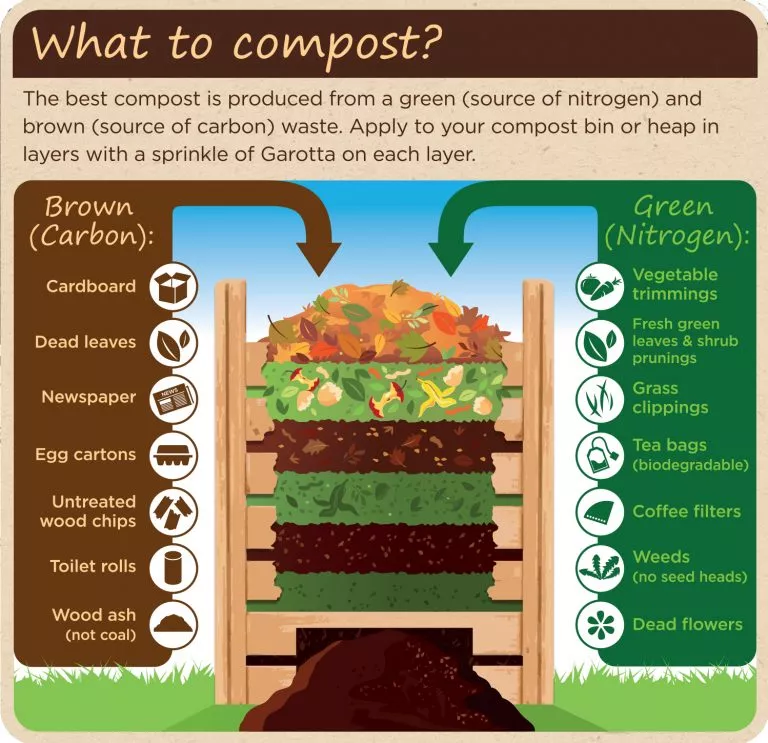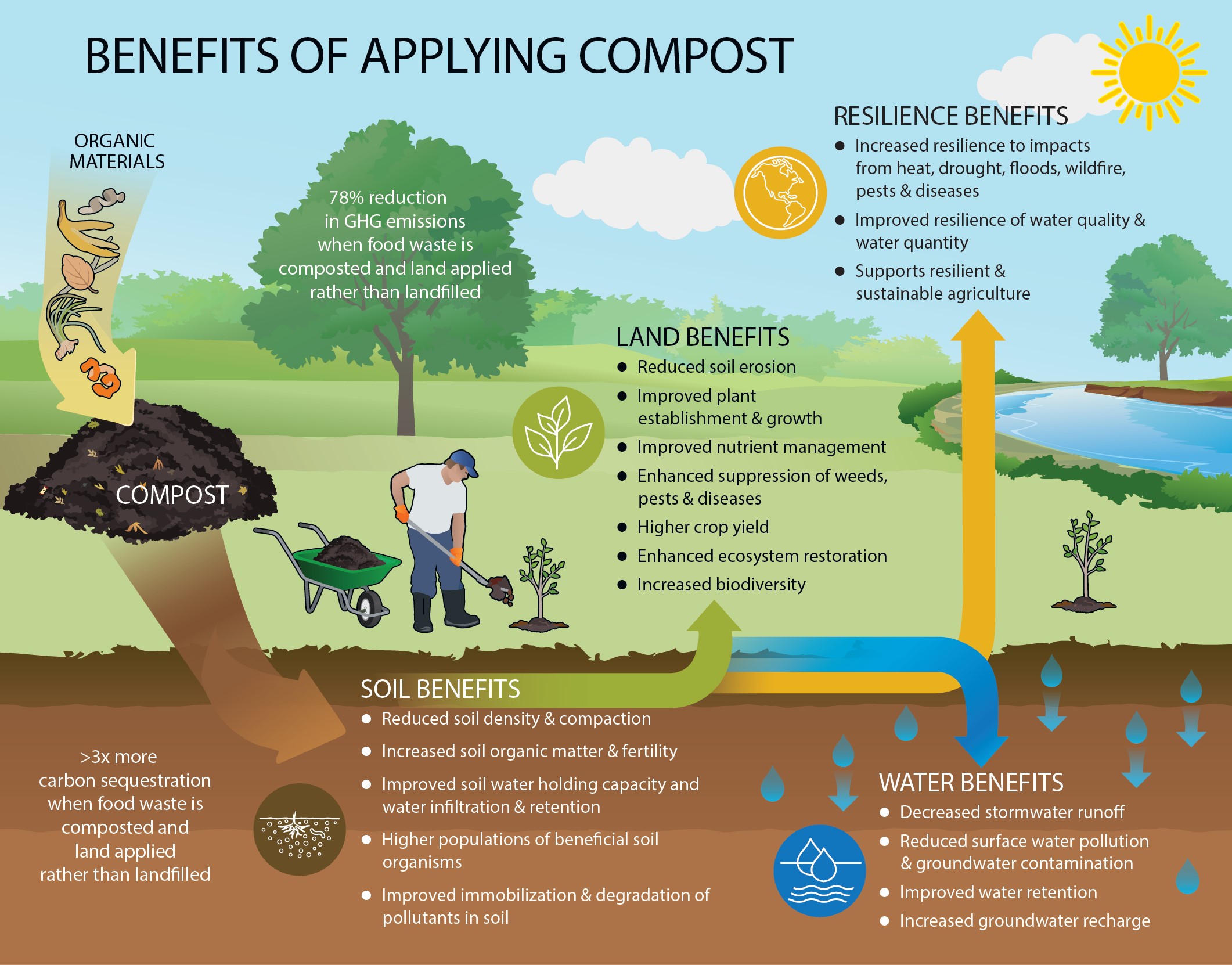What is the Secret to Good Compost? Discover Essential Tips for Successful Composting

Composting is an art that transforms kitchen scraps and yard waste into nutrient-rich soil, essential for a thriving garden. However, many aspiring composters struggle with the process and may find themselves frustrated by unpleasant odors or slow decomposition. Understanding the key elements of successful composting can significantly enhance your compost pile's efficiency and overall health. This article will uncover the secrets to creating effective compost, providing essential tips on materials, aeration, moisture balance, and maintenance. Whether you're a novice or an experienced gardener, these insights will help you master the art of composting and support a sustainable environment.
What is the Secret to Good Compost?
Good composting relies on a careful balance of carbon and nitrogen materials, moisture, and aeration. The secret lies in creating a layered mix of green materials (such as food scraps and fresh grass clippings) which are rich in nitrogen, and brown materials (like dried leaves and cardboard) that provide carbon. To ensure optimal decomposition, it is essential to maintain adequate moisture, turning the pile regularly to introduce oxygen, and maintaining a ratio of approximately 30:1 carbon to nitrogen. This blend encourages beneficial microorganisms to thrive, ultimately transforming organic waste into nutrient-rich humus that benefits soil health.
1. Understanding the Carbon-Nitrogen Ratio
The carbon-nitrogen ratio (C:N ratio) is crucial for successful composting. Carbon is found in materials like dried leaves, straw, and paper, while nitrogen is present in food scraps, grass clippings, and manure. The ideal C:N ratio for compost is around 30:1. If the ratio is too high in carbon, the compost will decompose slowly, lacking sufficient nitrogen for microbial activity. Conversely, too much nitrogen can lead to a smelly, soggy mix, as it encourages anaerobic conditions. Monitoring this balance ensures a healthy composting process.
2. The Importance of Aeration
Aeration plays a pivotal role in the composting process by introducing oxygen that is vital for aerobic decomposition. When compost materials are tightly packed, oxygen levels drop, leading to anaerobic conditions that result in bad odors and slow breakdown. To promote effective aeration, turn the compost pile every few weeks using a pitchfork or compost aerator. This movement not only incorporates oxygen but also helps to mix the materials, ensuring uniform decomposition and encouraging the growth of beneficial microorganisms.
3. Layering Your Compost Pile
Proper layering of compost materials can significantly enhance the breakdown process. A general guideline is to alternate layers of green and brown materials, ensuring a balanced mix. Begin with a layer of coarse materials like twigs or straw at the bottom to improve drainage, followed by a layer of greens, and then a layer of browns. This structure allows for better airflow and moisture retention, creating an environment conducive to the activity of decomposers. Maintaining this balance while layering helps prevent compacting, which can hinder the composting process.
4. Managing Moisture Levels
Moisture management is critical to achieving good compost. The ideal compost pile should feel like a damp sponge—moist but not waterlogged. If the pile is too dry, decomposition slows down as microorganisms require moisture to thrive. Conversely, excess moisture can lead to rotting and unpleasant odors. Regularly check the pile's moisture and add water as necessary, especially during dry spells, or add dry materials to absorb excess moisture. Ensuring balanced hydration helps maintain an efficient composting process.
5. Choosing the Right Ingredients
Selecting the right ingredients for compost is essential for quality end product. Foods scraps, garden waste, and certain paper products are great additions, while items like meat, dairy, and oils can attract pests or create odors. Ideal compost materials include fruits, vegetables, coffee grounds, eggshells, and plant trimmings. It's also beneficial to chop larger pieces into smaller sizes to speed up decomposition. By carefully choosing and preparing your compost ingredients, you can create a rich, balanced mix that enhances soil nutrition.
| Component | Role in Composting |
|---|---|
| Dried Leaves | Source of carbon (brown material) |
| Food Scraps | Source of nitrogen (green material) |
| Twigs | Improves aeration and drainage |
| Grass Clippings | Rich in nitrogen |
| Cardboard | Provides carbon and structure |
How to create the perfect compost?

To create the perfect compost, you need to understand the essential components and processes involved in composting. The goal is to decompose organic material into nutrient-rich humus that can enhance soil fertility. Here's a detailed guide on how to achieve that.
Understanding Compost Ingredients
The ingredients in your compost are crucial for successful decomposition. There are two main categories of compost materials: greens and browns.
- Greens: These are nitrogen-rich materials that include kitchen scraps (e.g., vegetable peels and fruit waste), grass clippings, and coffee grounds.
- Browns: These are carbon-rich materials such as dry leaves, straw, cardboard, and wood chips.
- Water: A suitable amount of moisture is necessary to facilitate microbial activity, which is crucial for breaking down organic matter.
Balancing Greens and Browns
A proper balance between greens and browns is essential for efficient composting. An ideal ratio is typically about 2 parts browns to 1 part greens.
- Carbon to Nitrogen Ratio: Keeping the right ratio helps maintain a healthy microbial environment, which breaks down materials quicker.
- Layering: When adding materials, layer greens and browns to help aerate the compost and speed up decomposition.
- Monitoring: Adjust according to the smell and heat of the compost pile; a bad odor may indicate too many greens, while a lack of heat may suggest too many browns.
Maintaining Proper Aeration
Aeration is crucial in composting, as it helps supply oxygen to the microorganisms that break down the organic matter.
- Turning the Pile: Regularly turning your compost pile (about every few weeks) introduces oxygen and promotes even decomposition.
- Using Air Holes: If you’re using a compost bin, ensure there are sufficient holes for airflow.
- Aerobic vs. Anaerobic: Aim for an aerobic process (with oxygen) as anaerobic conditions can lead to foul odors and slow down decomposition.
Controlling Moisture Levels
Moisture levels in your compost are key to creating the ideal environment for microorganisms. Too much or too little water can impede the composting process.
See also:
- Ideal Moisture Content: The moisture level should be similar to that of a damp sponge—moist but not dripping wet.
- Covering the Pile: Use a tarp or lid to maintain moisture during dry spells but ensure it can still breathe.
- Adding Water: If the pile is dry, sprinkle water evenly while turning the compost to incorporate it properly.
Harvesting Your Compost
Knowing when and how to harvest your compost is vital for using it effectively in your garden.
- Signs of Completion: The compost is ready when it turns dark brown, has a crumbly texture, and smells earthy.
- Separation: Remove any unbroken materials before using the compost; these can be returned to the pile for further decomposition.
- Application: Use your finished compost to enrich garden soil, improve potting mixes, or as a top dressing for your plants.
What improves the quality of compost?

The quality of compost can be significantly improved through various factors that enhance its nutrient content, structure, and microbial activity. Here are some critical elements that contribute to superior compost quality:
Balancing Carbon to Nitrogen Ratio
The carbon to nitrogen (C:N) ratio is crucial for effective composting. A balanced ratio provides the necessary elements for microorganisms to thrive, which in turn accelerates the decomposition process.
- Carbon source: Materials such as dry leaves, straw, and cardboard provide carbon, which is essential for energy.
- Nitrogen source: Green materials like grass clippings, food scraps, and manure add nitrogen, vital for microbial growth.
- Optimal ratio: A C:N ratio of about 25-30:1 is generally recommended for effective composting.
Incorporating Diverse Materials
Using a variety of organic materials in your compost pile can significantly enhance its quality. Different materials contribute unique nutrients and improve microbial diversity.
- Fruit and vegetable scraps: These provide a rich source of nutrients and moisture.
- Yard waste: Grass clippings and leaves add essential minerals and help aerate the compost.
- Browns and greens: Combining 'browns' (carbon-rich) and 'greens' (nitrogen-rich) ensures a balanced nutrient profile.
Moisture Management
Moisture levels in compost are critical to maintaining the activity of beneficial microorganisms. Too much or too little moisture can hinder the composting process.
- Ideal moisture level: Aim for a damp sponge-like consistency for optimal microbial activity.
- Aeration: Turn the compost regularly to promote airflow, which helps avoid anaerobic conditions.
- Watering: If the compost is too dry, gently moisten it, but avoid over-saturation.
Temperature Control
Temperature is a vital factor in compost quality, as it affects microbial activity and the breakdown of organic matter.
- Heat generation: Microbial activity generates heat; a temperature of 130-160°F (54-71°C) is ideal for efficient composting.
- Regular monitoring: Use a compost thermometer to check temperatures and ensure they remain within optimal ranges.
- Turning the pile: Regularly turning the compost helps maintain heat and promotes consistent breakdown.
Using Additives and Activators
Certain additives can enhance compost quality by boosting microbial activity and introducing beneficial organisms.
- Compost accelerators: Commercial products or natural options like finished compost can jumpstart the decomposition process.
- Bone meal or blood meal: These provide additional nitrogen and other essential nutrients to enrich the compost.
- Minerals: Adding elements like rock phosphate or greensand can enhance nutrient availability in the final compost.
What is the most effective compost method?

The most effective compost method is generally considered to be the hot composting technique. This method utilizes the natural process of decomposition, which happens more quickly and effectively at high temperatures. Typically, hot composting can produce finished compost in about 4-8 weeks, depending on various factors such as materials used, moisture levels, and aeration.
What is Hot Composting?
Hot composting is a technique that involves creating a compost pile that reaches temperatures between 130°F and 160°F (54°C and 71°C). These high temperatures are achieved by balancing the right mix of green materials (like kitchen scraps) and brown materials (like dried leaves or cardboard) in the pile. The heat generated accelerates the decomposition process and helps eliminate pathogens and weed seeds.
- Green materials: Nitrogen-rich items like food scraps, fresh grass clippings, and coffee grounds.
- Brown materials: Carbon-rich items like dried leaves, straw, and cardboard.
- Water and air: Essential to keep the materials moist and aerate the pile for effective microbial activity.
Benefits of Hot Composting
The hot composting method offers several advantages, making it a popular choice for many gardeners and landscapers. The speed of decomposition is one significant benefit, as it allows for quicker turnaround times in producing usable compost. Additionally, the high temperatures can help to kill off harmful pathogens and seeds that might be present in the compost materials.
- Rapid decomposition: High temperatures speed up the breakdown of organic matter.
- Pathogen control: Heat helps eliminate harmful bacteria and weed seeds.
- Nutrient-rich compost: Resulting compost is often richer in nutrients, promoting soil health.
How to Maintain a Hot Compost Pile
To effectively maintain a hot compost pile, it’s essential to monitor specific elements such as the balance of materials, moisture content, and aeration. Regular turning of the pile is vital to ensure that all material reaches sufficient temperatures and decomposes uniformly.
See also:
- Balance materials: Aim for a ratio of 2 parts brown to 1 part green.
- Moisture management: Keep the pile damp but not soggy—similar to a wrung-out sponge.
- Turn the pile: Use a pitchfork or compost aerator to mix the materials every 1-2 weeks.
Common Mistakes in Hot Composting
There are several common mistakes that individuals may encounter while engaging in hot composting. Addressing these issues can help achieve a successful composting experience and yield the desired results.
- Incorrect ratios: Failing to balance green and brown materials can hinder heat generation.
- Neglecting moisture: Too dry or too wet can slow down the composting process.
- Insufficient aeration: A lack of air can lead to anaerobic conditions, which produce unpleasant odors.
Tools and Equipment for Hot Composting
Utilizing the right tools and equipment can greatly enhance the efficiency of hot composting. These tools assist in balancing the components of the compost pile and maintaining optimal conditions for decomposition.
- Compost thermometer: Allows you to monitor the internal temperature of the pile.
- Pitchfork or compost aerator: Essential for turning the pile to improve aeration.
- Bin or enclosure: Helps to contain the materials and regulate temperature.
How do I get my compost to decompose faster?

To accelerate the decomposition process of your compost, you can implement several techniques that ensure a lively ecosystem of microorganisms. Here are some effective methods to help your compost break down faster.
Maintain Proper Moisture Levels
Maintaining adequate moisture in your compost is crucial for the organisms that break down organic material. Compost should feel like a damp sponge, not too wet or too dry.
- Check regularly: Stir your compost regularly to ensure moisture is evenly distributed.
- Add water: If it feels dry, add some water, but avoid over-saturation.
- Cover your pile: Use a tarp or lid to protect it from excessive rain, which can lead to soggy compost.
Balance Carbon and Nitrogen
The right balance of carbon and nitrogen (C:N ratio) is essential for effective composting. Carbon-rich materials (browns) provide energy, while nitrogen-rich materials (greens) offer protein for microorganisms.
- Add more greens: Include items like vegetable scraps, grass clippings, or coffee grounds to increase nitrogen.
- Incorporate browns: Use materials like dried leaves, straw, or shredded paper to ensure an appropriate ratio.
- Monitor the balance: Aim for a C:N ratio of around 30:1 for optimal decomposition speed.
Chop and Shred Ingredients
Breaking down larger pieces of organic matter into smaller bits increases the surface area for microorganisms to work on, speeding up the process.
- Use a shredder: Shredding leaves, branches, and other materials makes them easier to break down.
- Chop kitchen scraps: Cut fruits and vegetables into smaller pieces before adding them to the compost.
- Mix different sizes: Combine both small and large pieces to create a diverse compost structure.
Turn Your Compost Regularly
Aeration is essential for composting as it provides oxygen that aerobic bacteria need to thrive. Turning your pile introduces air and accelerates decomposition.
- Use a pitchfork: Regularly turn the compost every few weeks to keep it aerated.
- Mix thoroughly: Ensure that different materials are evenly distributed throughout the pile.
- Monitor temperature: A properly aerated compost will heat up; if it's cooling down, it may need more turning.
Incorporate Compost Activators
Compost activators are materials that can help jumpstart the decomposition process by increasing microbial activity.
- Add manure: Animal manure, such as from chickens or cows, is rich in nitrogen and beneficial microorganisms.
- Use commercial activators: There are several products available specifically designed to boost compost microbial activity.
- Include garden soil: Adding a layer of finished compost or garden soil can introduce needed microbes to your pile.
Questions from Our Readers
What materials are best for composting?
The best materials for composting include green materials like fruit scraps and grass clippings, as well as brown materials such as dried leaves and cardboard. It's essential to maintain a balanced ratio of greens to browns to ensure effective decomposition and healthy compost.
How often should I turn my compost?
Turning your compost is crucial for aeration and speeding up the decomposition process. It is generally recommended to turn your compost pile every 1 to 2 weeks, which helps mix the materials and introduces oxygen, vital for microbial activity.
What is the ideal moisture level for compost?
The ideal moisture level for compost should be similar to that of a sponge that is damp but not dripping wet. If your compost is too dry, the microorganisms may become inactive; if it's too wet, it can become smelly and anaerobic. A good rule of thumb is to aim for about 40-60% moisture content.
How long does it take for compost to be ready?
The time it takes for compost to be ready can vary significantly but typically ranges from three months to a year. Factors like the materials used, temperature, and moisture levels can influence this timeline. Generally, when the compost is dark, crumbly, and has an earthy smell, it's ready to be used.
See also:

If you want to read more articles like What is the Secret to Good Compost? Discover Essential Tips for Successful Composting, we recommend you check out our Compost category.
Leave a Reply
Related Articles